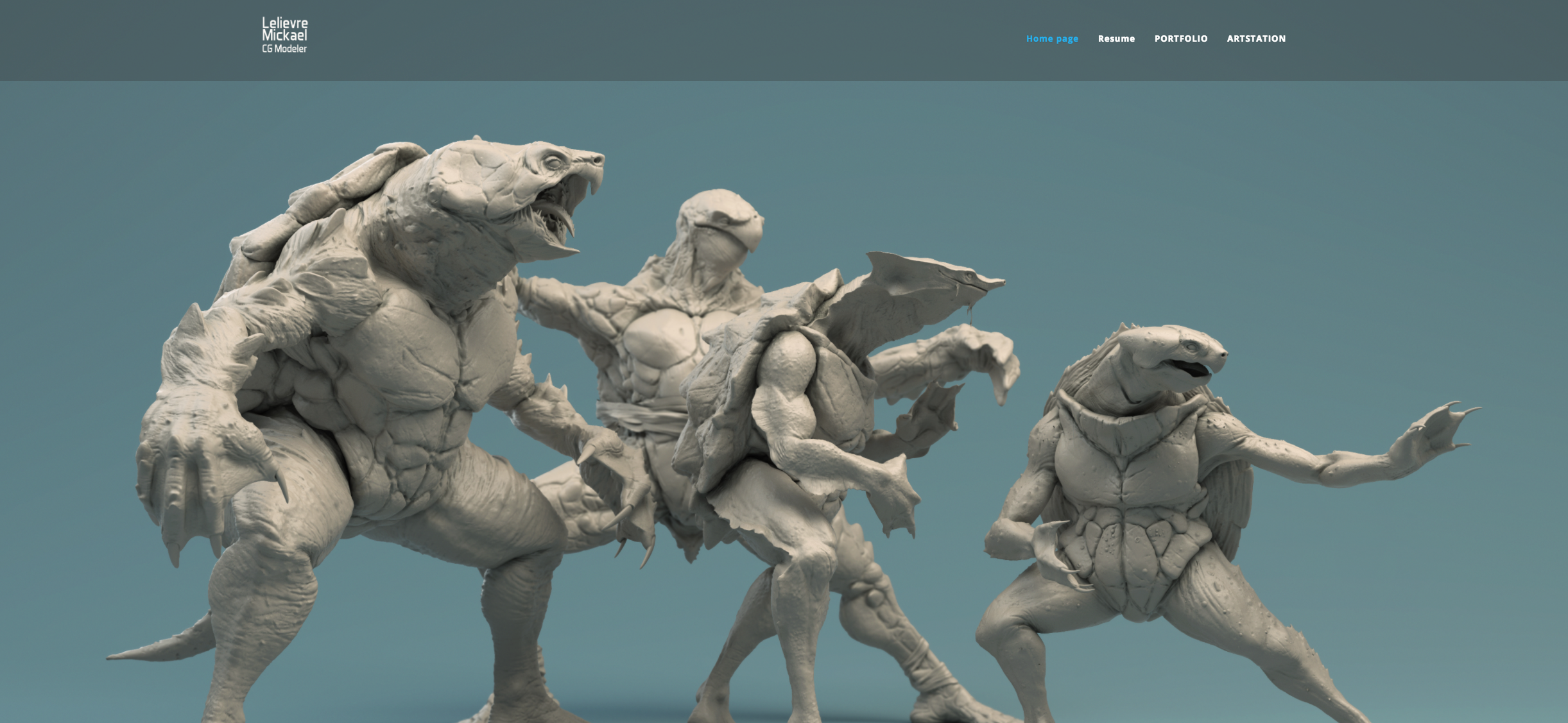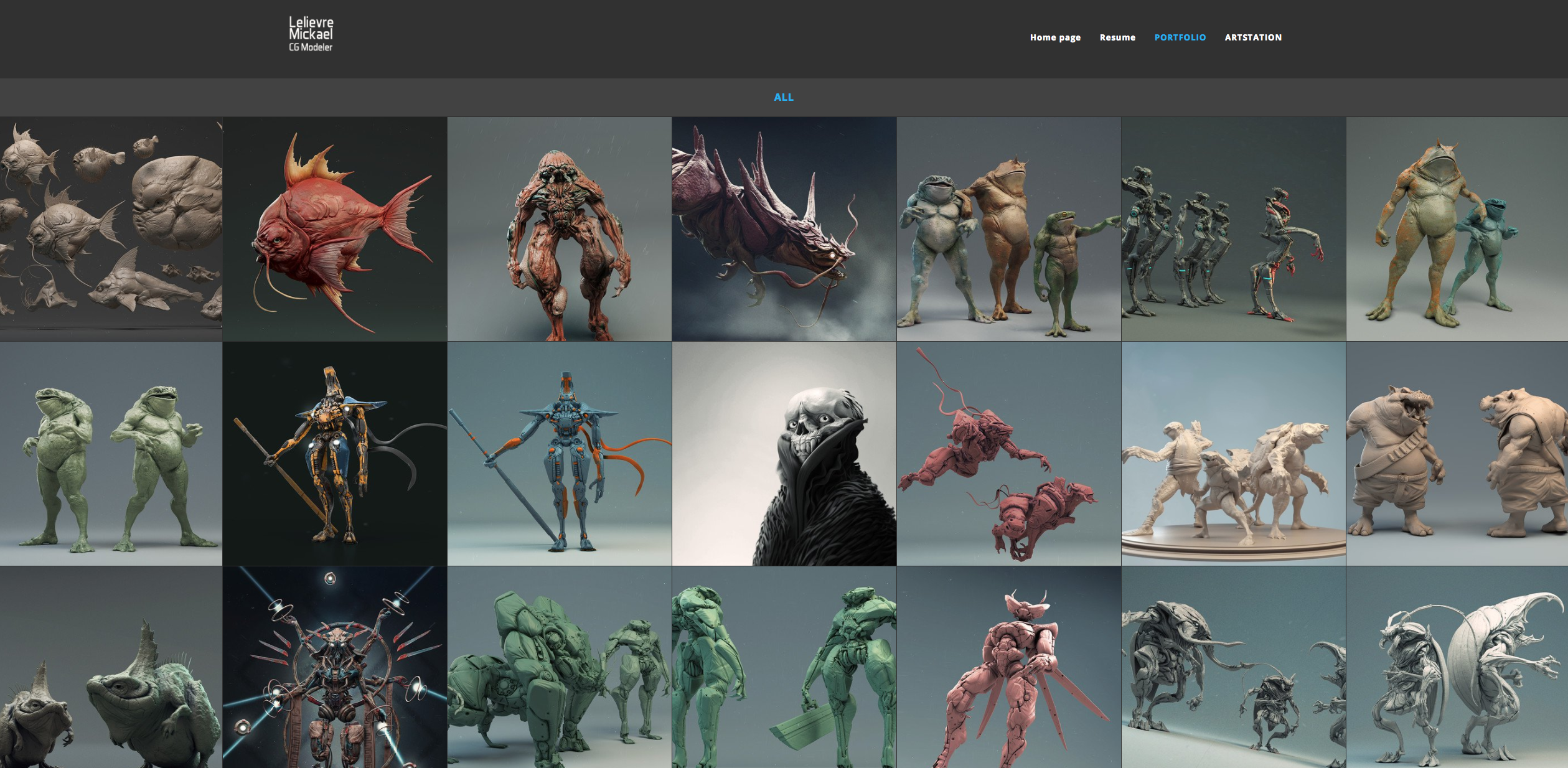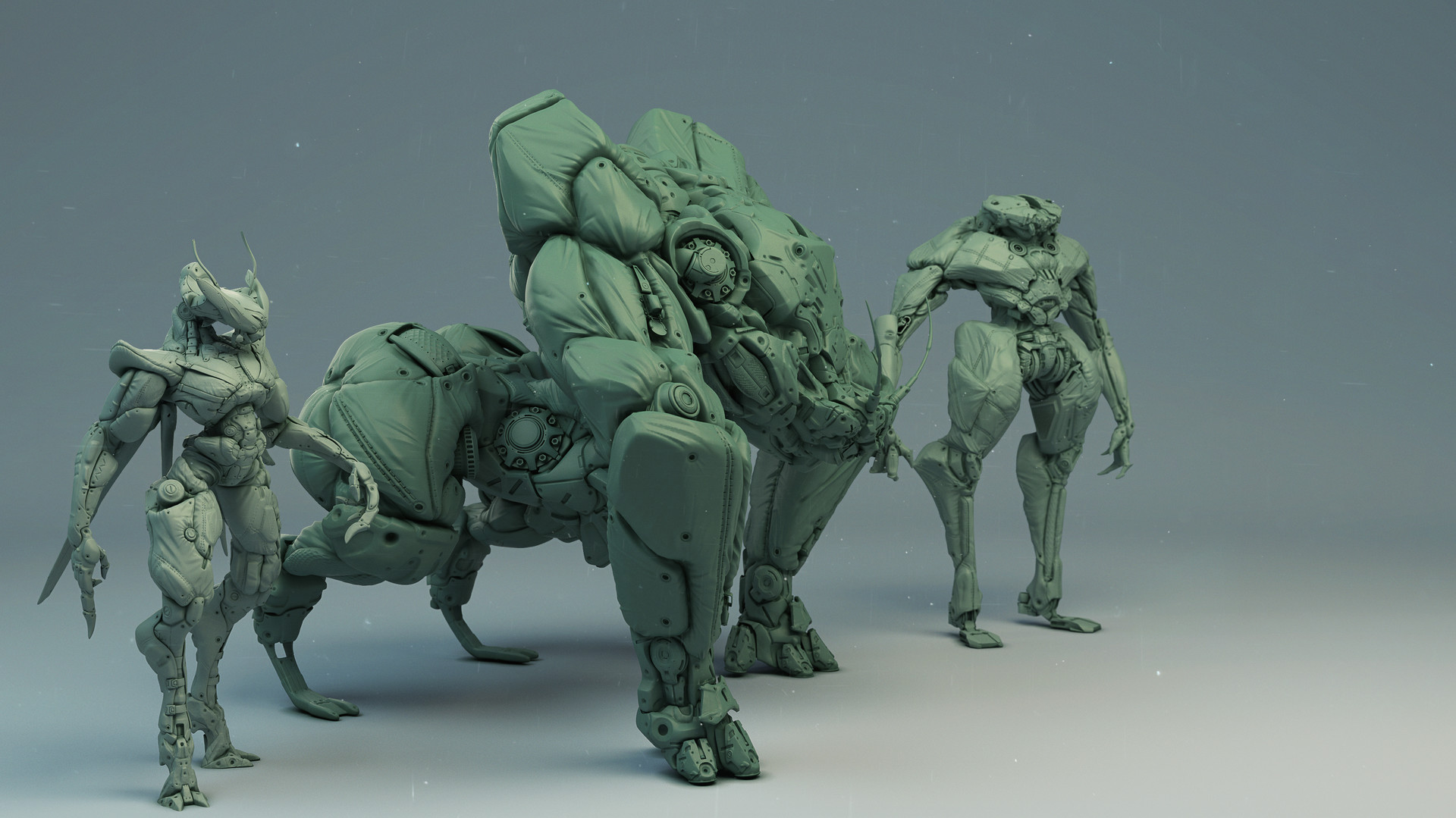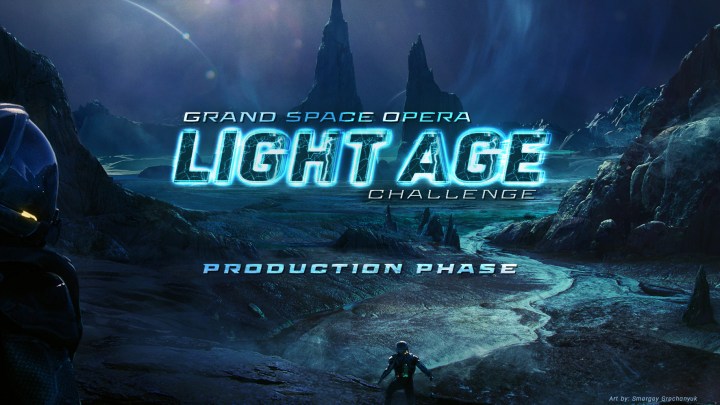Featured Pro Portfolio: Mickael Lelièvre
Mickael Lelièvre is a concept sculptor and modeler working in Toulouse, France who specializes in creating creatures and robots. Using one of our most popular Pro Themes (Bombastic), his portfolio website clearly showcases his expertise in 3D.
Check out Mickael’s ArtStation-powered portfolio website.
In this Featured Pro Portfolio interview, he talks us through his creation process, how he developed his skills, and where he finds inspiration.
What do you think is most important to consider when building your portfolio?
I think the most important in a portfolio is to show what you’re capable of and to show where you want to go. I’m currently preparing myself to be a freelance in concept design of character so I build my portfolio to show what I can bring in a movie or video game project. So I would say that if you want to build a professional portfolio, you need to built it for your future professional work. I talked a lot with other artists and we were in agreement that personal work is always bringing your spirit and shows even more your creativity, so don’t hesitate to put personal work.
How did you develop your skills as a professional artist?
At the beginning I wanted to be a car designer but if I knew as a young student that it was possible to study for Video Games in France I think I could have changed my mind so I did a Design program and after starting a Master of Design I realized that I was loosing all the creative process. By that, I mean it was becoming more and more boring and too specific. In the end, I think it was good way to go to the 3D world after. I saw some 3d renders from a School of Lyon in France and I was impressed by the pictures so decided to try the Bachelor of 3D there. I learnt a lot by myself in the beginning and of course at the school for 3dsmax. I would say there are some useful tutorials on internet now, especially for Zbrush. I would recommend Joseph Drust, Rafael Grassetti and Keos Masons’s tutorial. With those, I learnt new techniques and understood that Zbrush was really full of good surprises.
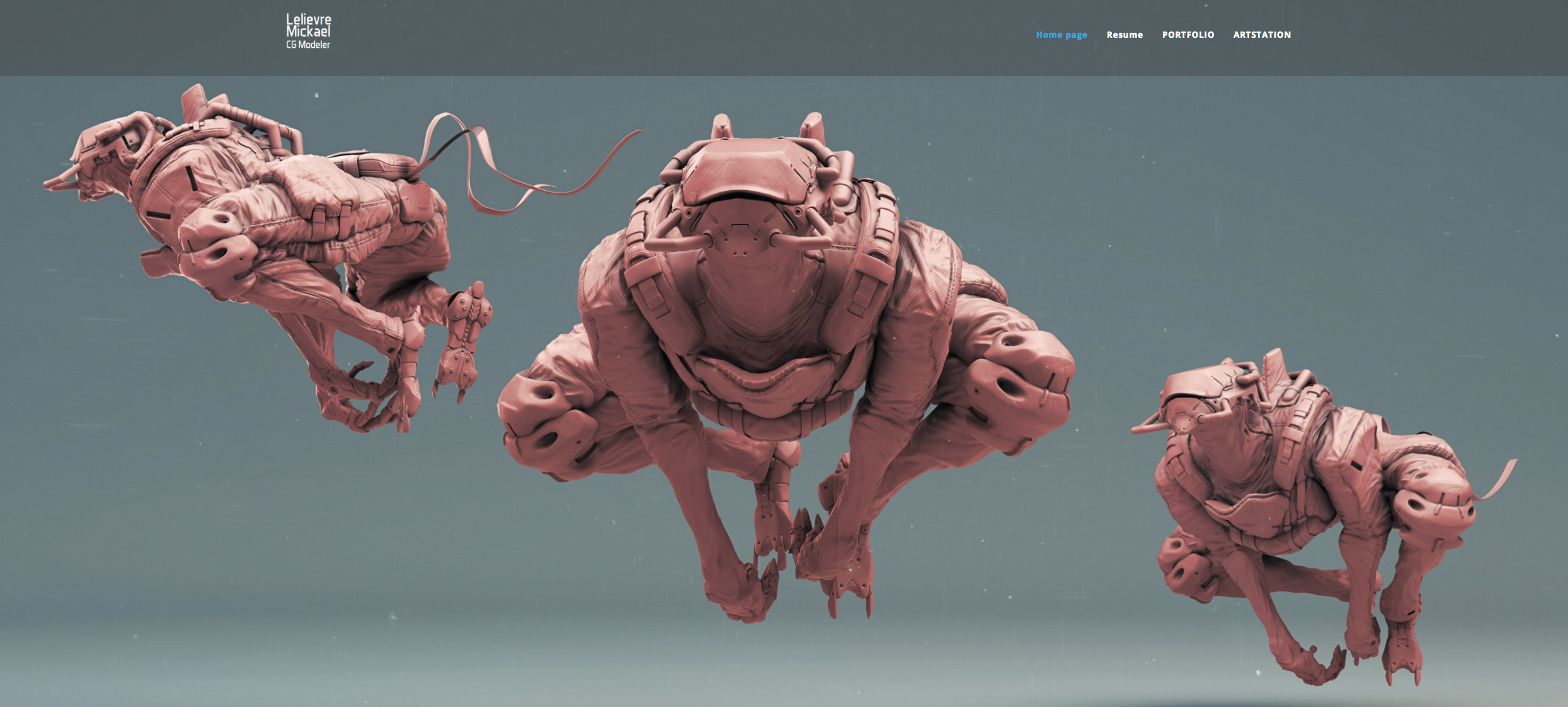 Where do you find inspiration?
Where do you find inspiration?
I love gardening, it’s my second passion. It demands a lot of patience and the result depend on you and mother nature. I love to observe plants and insects, you can find everything you need for inspiration in nature.
Tell us about your creation process.
I often start with the silhouette. I play with Dynamesh and start moving, adding rough details and preparing some parts here and there. All the while, I’m duplicating, rotating moving…etc. Sometimes I work a lot by starting with the head but I never stay too long on one part. It’s like when you’re sketching – never stay too long at the same place, start the head, and after that make a finger, and start the pelvis…etc. Once I have a good silhouette, I start to separate in different sub tools and start cleaning.
Once you see that Zbrush is powerful in hard surface, you can do everything. Zbrush is really something instinctive and it’s kind of infinite, you can start again at any time. If you start sculpting hard surface, you can have very modular subtool, A shoulder can became a knee and one part of the head could be a muscle in another place… I mean it’s really malleable. With other software you really have to think about everything before you start but with Zbrush there is so much freedom.
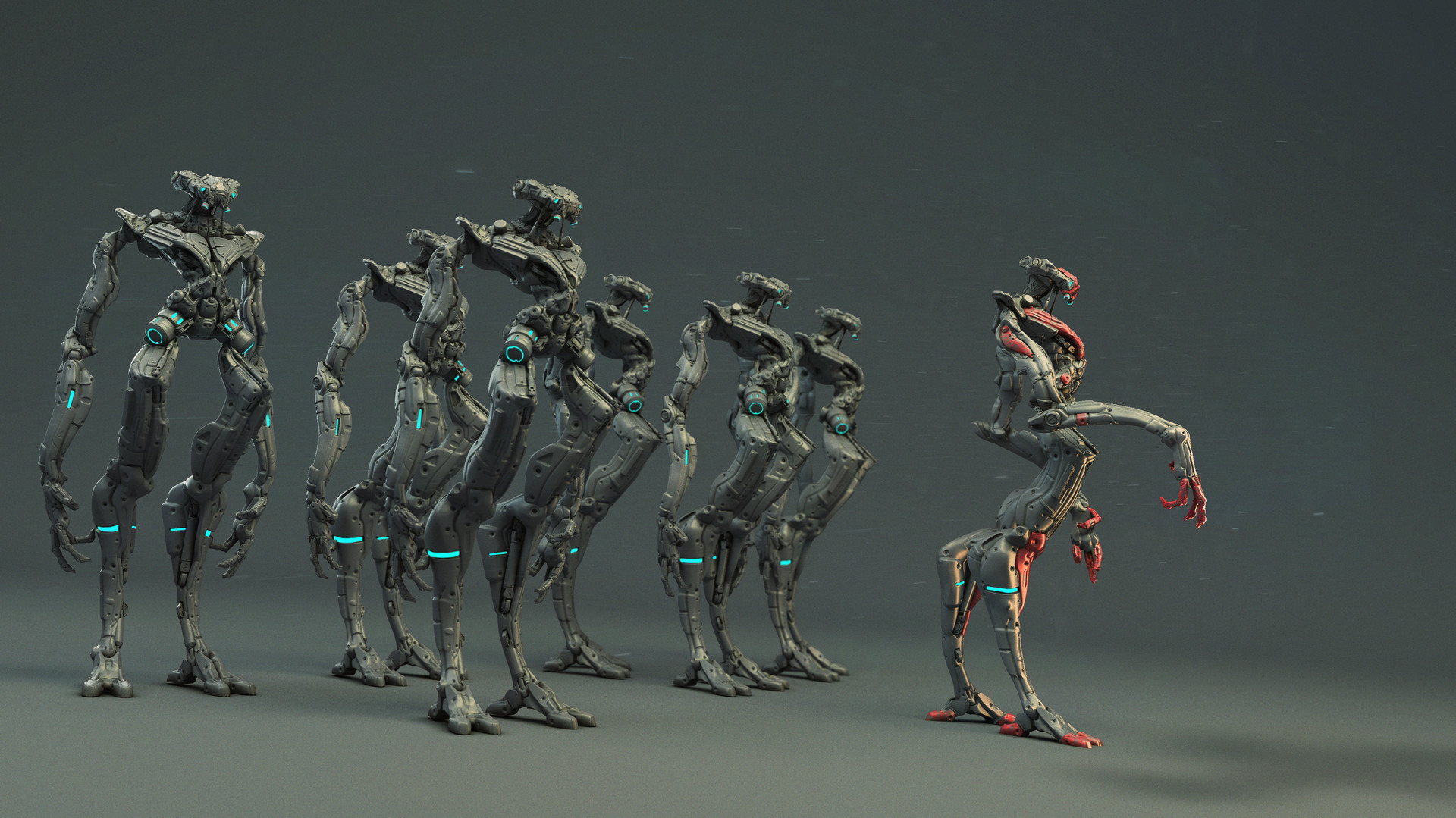
See more of Mickael’s work on his portfolio website. To learn more about ArtStation Pro websites, click here.
